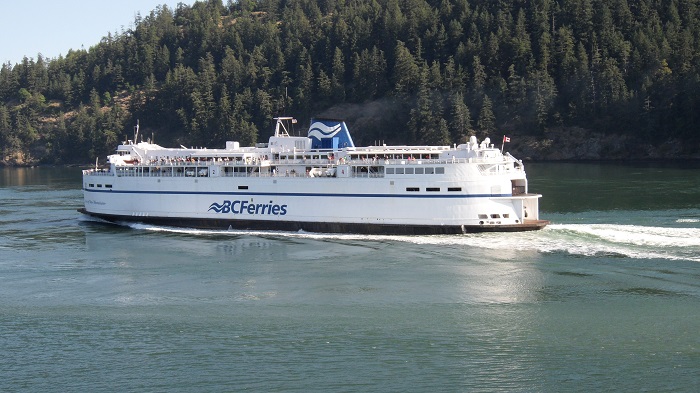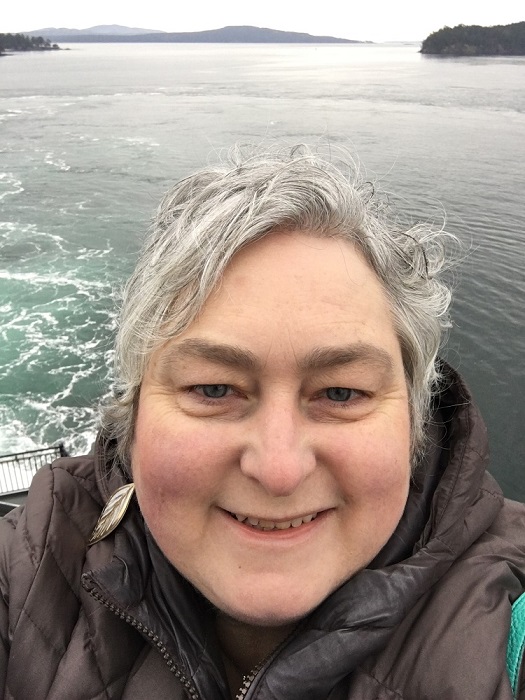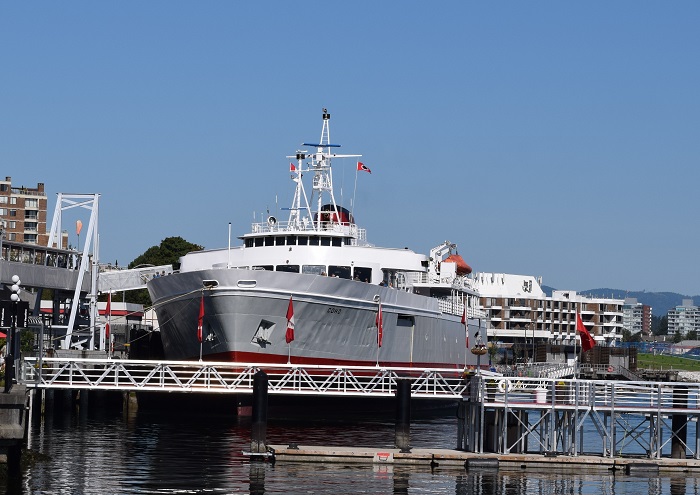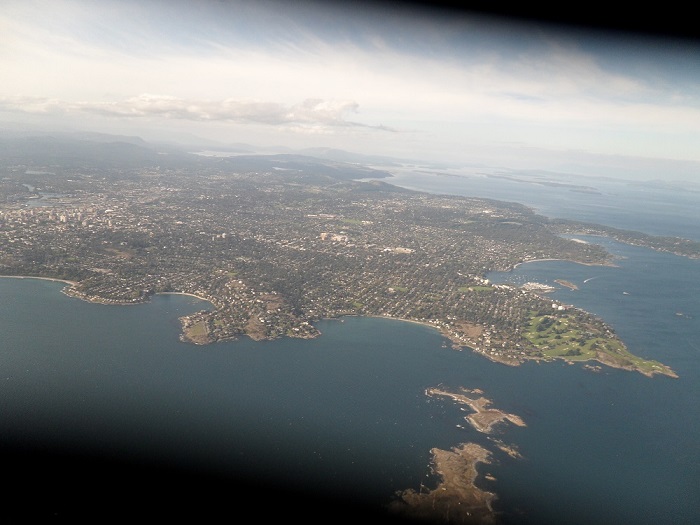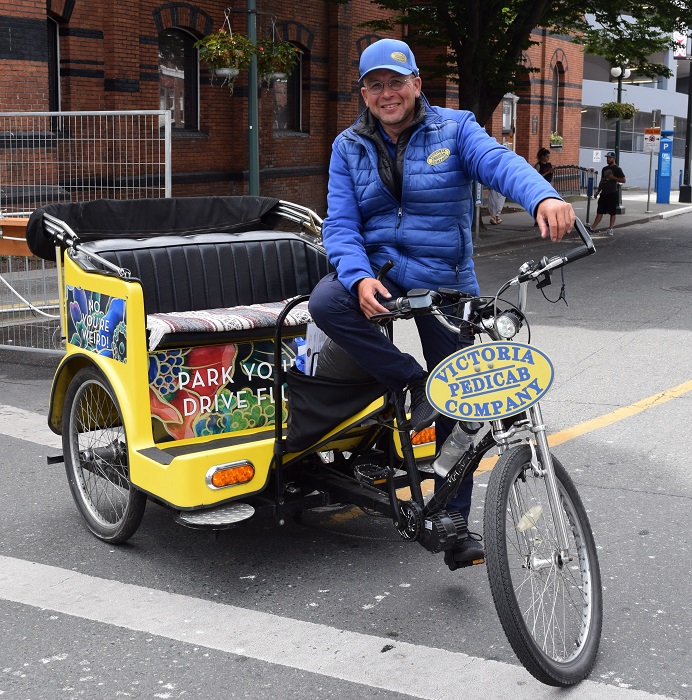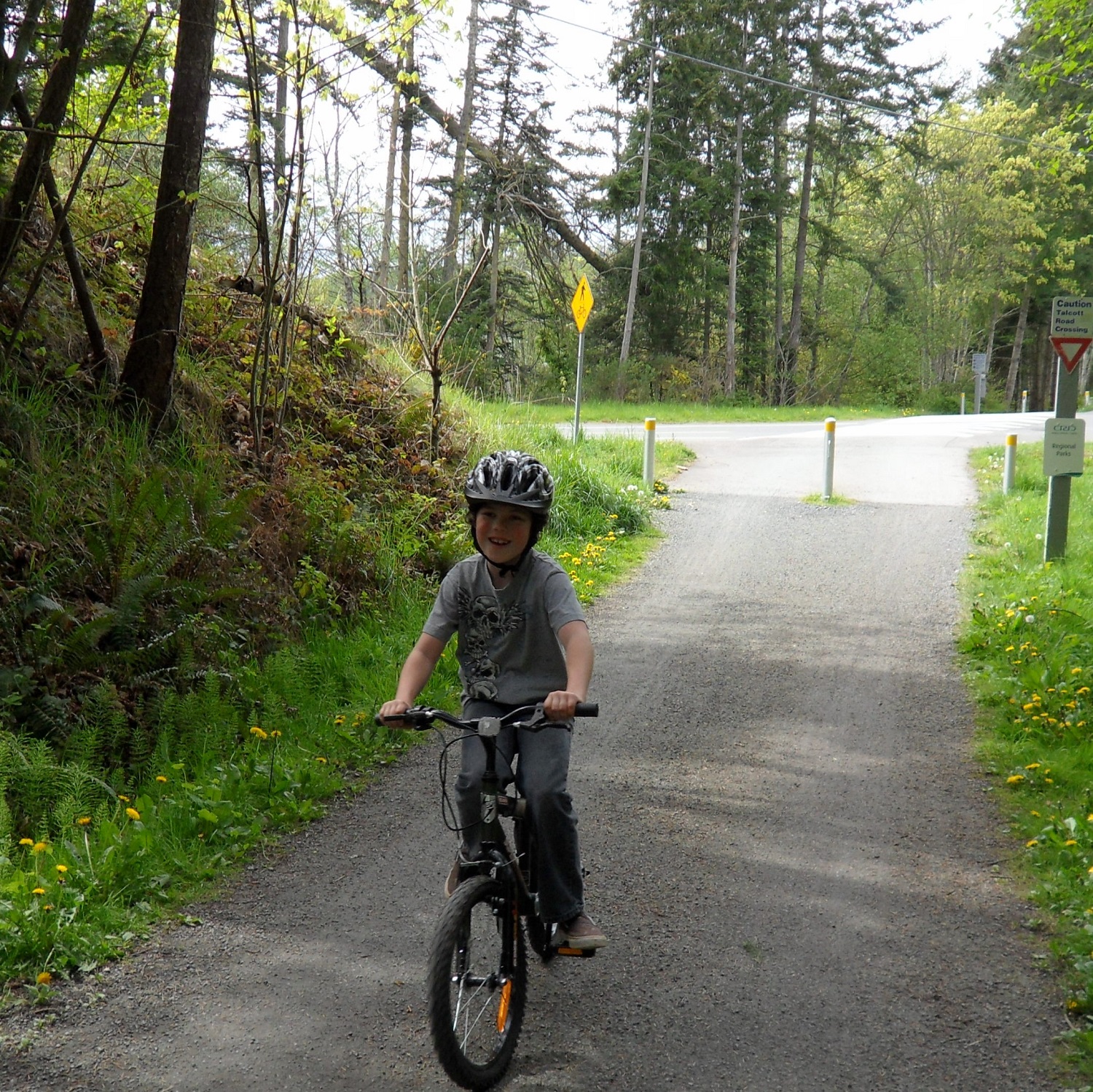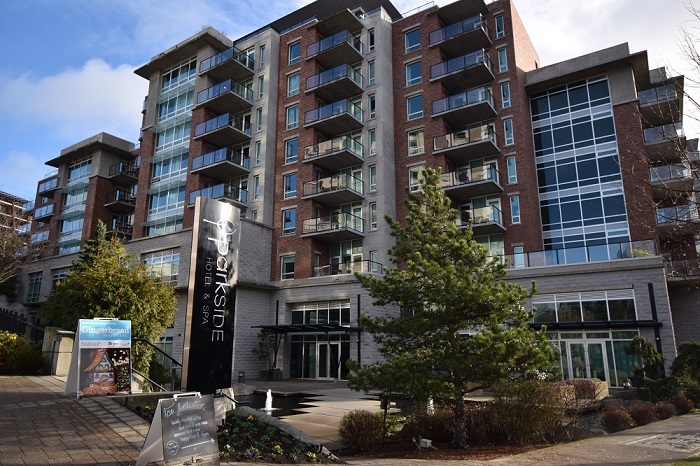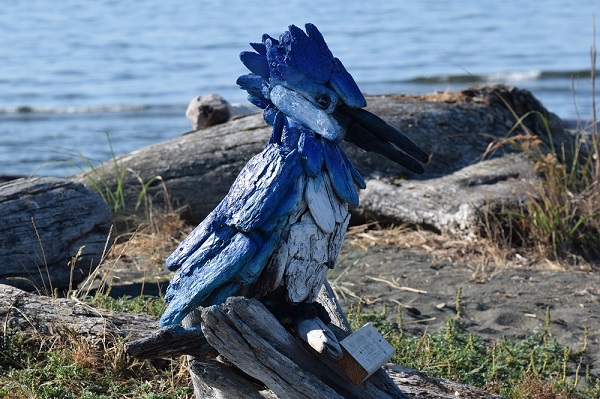- Victoria
- Getting Here & Getting Around
How to Get to Victoria BC and Tips on Getting Around
Are you wondering how to get to Victoria BC?
For starters we live on an island called Vancouver Island. People frequently get confused because the City of Vancouver is not on Vancouver Island, but rather on “the mainland” of Canada. Some people think we live on Victoria Island - we don't and as far as I can tell, there is no such place called Victoria Island.
Vancouver Island is the largest island on the Pacific Coast of the Americas.
We are not connected to the mainland by a bridge. So how do you get to Victoria?
Disclaimer: I receive a small commission from some of the links on this page.
How to Get to Victoria by Sea
How to get to Victoria by sea from Canada:
BC Ferries sails between the mainland and Vancouver Island and to ports on several of the smaller Gulf Islands.
You can walk on as a foot passenger, travel via personal vehicle including bicycle, motorbike, car or travel trailer or board a passenger bus.
There are several crossings daily from Vancouver (Tsawwassen) to Victoria (Swartz Bay). If you were so inclined you can also reach Vancouver Island via Horseshoe Bay-Departure Bay (Vancouver to Nanaimo) or Prince Rupert to Port Hardy but then you would have a 2 to 8-hour drive to Victoria.
How to get to Victoria by sea from the United States:
There are three US ferry options to get to Victoria.
- From Port Angeles to Victoria’s Inner Harbour via the vehicle ferry M.V. Coho.
- The Clipper, a foot passenger-only ferry that sails between Seattle and Victoria’s Inner Harbour.
- From Anacortes to Sidney, BC via Washington State Ferry. Vehicles and foot passengers are welcome and this option will dock in Sidney, very close to where BC Ferries terminals are located. Foot passengers can reach downtown Victoria via public transit (purchase a day trip pass from the driver for $5 per person). It is approximately 30-minute drive for vehicle traffic to reach downtown. NOTE: This ferry has not re-started since the pandemic and we recently learned it may not return for up to 10 years.
How to Get to Victoria by Air
Victoria is home to an international airport with several flights landing daily. The main carriers within Canada are West Jet and Air Canada and Pacific Coastal Airlines here in BC. Both Alaska Airlines and Delta Air Lines have international flights arriving from Seattle a couple times daily.
Other air options for getting to Victoria are seaplanes (sometimes called float planes) and helicopters.
I have had the pleasure of flying on both aircraft and they are exhilarating in their own way.
Harbour Air Seaplanes fly by sight – which means they have to be able to see where they are going, which is actually quite reassuring but it means they don’t fly when it is dark or inclement weather. They take off and land on the water which is pretty cool. They also offer amazing tour packages - use Viator to find the seaplane excursion that suits you.
Helijet – a popular helicopter option is more reliable in inclement weather because they do fly using instrumentation.
I once took Helijet from Vancouver to Victoria on a foggy day and I was pretty freaked out the entire 35-minute ride because once we were up in the air, we flew through a thick blanket of fog with zero visibility for about 20 minutes.
Normally I enjoy the incredibly scenic flight but not this day! Thankfully about 10 minutes before landing the fog lessened and we landed easily, without incident.
Now that you know how to get to Victoria, let me share some tips on getting around Victoria.
Getting Around Victoria
Thankfully almost everyone has GPS these days because getting around Victoria can be more complicated than you think it should be!
Many cities are built on a bit of a grid system with streets running north-south and avenues running east-west – or some variation of that. But when your city is built around the craggy shoreline of an island, things aren’t always that simple.
Getting around Victoria is mainly a challenge due to the seemingly endless names for the same road. It seems every time you turn a corner or go around a curve, the road name changes – even if you are still on the same road!
And we don’t do the greatest job with street signs either. When driving, it is fairly easy to see the name of the road you are passing, but signage telling you what street you are already on, is sorely lacking. So, when you’re lost and you don’t even know what road you’re on, the names of the roads you are passing does little good.
Bottom line when driving around Victoria – trust your GPS! Or better yet, hire a trusty tour guide and leave the driving to us.
Other Ways of Getting Around Victoria
BC Transit
Public transit is a safe, reliable option for locals and visitors in Victoria. For $5 you can purchase a day pass from any driver and you’re good to hop on and off as many times as you like for a full day. In addition to the boarding flexibility, a pass-carrying customer can bring up to four children, 12 years and under, on board for free.
Many of our regular fleet buses are double-deckers which is a thrill for most riders. One of my father-in-law’s favourite Victoria memories is riding around on a double-decker with his grandson!
The bus routes and schedules are especially good getting to and from hospitals and schools, including The University of Victoria and Camosun College.
Horse-Drawn Carriage Ride
Horse drawn carriages are to Victoria what Venetian boats are to Venice – iconic transportation. When you combine old world charm with knowledgeable guides, it’s easy to see why carriage rides are so popular. Hail your ride along Menzies Street, beside the British Columbia Parliament Buildings (across the street from the Coho and Clipper ferry terminals). These tours sell out quickly. Book a carriage ride today.
Pedicab
One of the most unique ways of getting around Victoria is in a pedicab. These human-powered bikes can hold up to four passengers. Many of the operators cater to the cruise ship passengers with pick up right at the terminal.
Book tours up to 5 ½ hours in length, sit back and enjoy your attentive, professional driver who will take you on a journey you won’t forget. Wind through historic James Bay past Victoria landmarks and into the Inner Harbour. Maybe even stop for a brew and some grub.
These tours fill up quickly so book early.
Harbour Ferry
Whether you take a short cruise down the scenic Gorge Waterway or as a water taxi from Fisherman’s Wharf to Spinnakers or any of the 14 convenient locations, harbour ferries are an integral part of our transportation network.
Harbour ferries/water taxis are an expedient way of getting around Victoria to visit multiple attractions, restaurants and landmarks in a short period of time. Fares are based on the length of your travel and which stop you hop off at.
On Sunday mornings at 10:45 from May through September, the Inner Harbour is the place to be for the delightful (and free) Harbour Ferry Ballet. You don’t want to miss this!
Other Transportation Options
- Walking – with a walk score of 99 in the downtown core, it’s a walker’s paradise (food tours are one of the most popular walking tours downtown).
- Cycling – more and more dedicated bike lanes are being built every year, improving our already impressive bike score of 75 (according to walkscore.com) - join a bike tour here
- Scooters – rent a scooter and see town on your own schedule
- Taxi cab – Bluebird and Yellow Cab are the most popular choices
Uber and Lyft have also begun operating in Greater Victoria.
Now that you know how to get to Victoria, and how to get around once you're here, there's some quirky things you are going to need to know before you get behind the wheel and drive around Victoria!
Flashing Green Traffic Lights
This is NOT an advance left turn signal giving you right of way. I moved here from Ontario where a flashing green light meant that you have the right of way to make a left-hand turn and oncoming traffic would have a red light. I don’t know what a flashing green light means in other provinces, but it does not mean that here! In British Columbia a flashing green light is a pedestrian-activated cross walk. So, if you approach a green light that is flashing, slow down and prepare to stop if it gets activated. According to TranBC, Ontario has adopted Transportation Association of Canada standards and is moving away from the flashing green light as a protected left-turn signal.
A Road With Many Names
I mentioned it earlier and I will say it again, there sure seems to be excessive street name changes in this town. It can feel as though every time a street curves, it changes names. One example of a street I use regularly is Island Highway. Closest to Victoria the road begins as Tyee Road, it curves to the left and briefly becomes Skinner, then it curves to the right and begins life as Craigflower Street. When Craigflower crosses Admirals and you enter the Town of View Royal, it becomes Island Highway (and to make matters worse some people refer to it as Old Island Highway!) and then when it curves again to the left, it becomes Sooke Road. And we have many, many examples of this phenomenon. If you don't already have one, I highly recommend a navigation system for your vehicle and at the very least a trusty mapbook.
Narrow Roads
Anecdotally, the streets in Victoria seem quite narrow. Again, I draw comparison to Ontario but it sure seems like each lane is a foot or more narrower than I was used to before moving here. I believe it comes down to snow. Ontario roads must be wide enough to accommodate banks of snow along the side of the road – for several months of the year. Victoria simply does not have that need. If and when it does snow here, it is usually only on the roads for a day or two – and maybe an entire week if we had some freak blizzard. Making roads wider for such a limited purpose just doesn’t seem necessary.
Painted Curbs and Their Meanings
When you drive around Victoria have you noticed curbs painted red, or yellow, or white or not at all? Here’s what it means.
- A red curb designates a bus stop and there is no stopping by passenger vehicles.
- Yellow curbs are no parking zones
- White curbs are usually loading zones for commercial vehicles. Curbs with white paint will usually have signage indicating the hours of the commercial parking zone and other vehicles are permitted to park there, outside of those hours.
- No paint at all means you are allowed to park but there may still be some restrictions, for example residential parking only or limits on the size of vehicle or length of time the vehicle is permitted to park.
Pedestrians and Cyclists
Learning how to safely cross a road was drilled into us at school growing up. “Look left, look right, then look left again”. I swear people here just drop their foot off the curb and start crossing, without even looking up from their phones! There is seemingly no regard for their own safety. So, when you drive around Victoria - beware of the pedestrian!
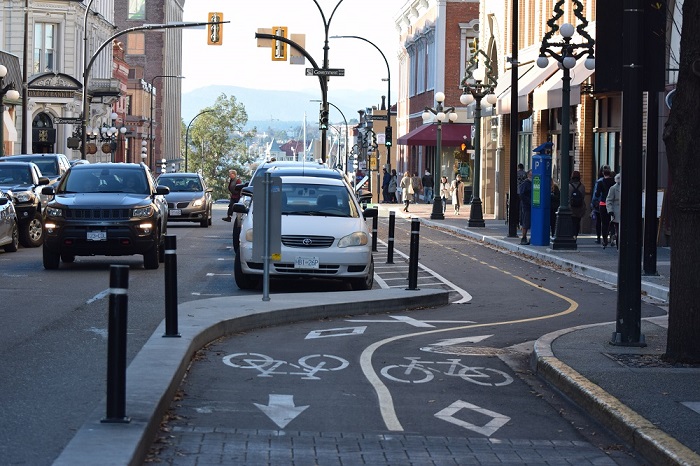
The good news for cyclists is that we do have an impressive range of dedicated bike lanes and more are being built every year. The tough thing for drivers is that with each new lane built, it means narrower roads, fewer parking stalls and more rules surrounding changing lanes and turning corners where bike lanes exist. Also, we have some busy roads that are already a bit narrow without dedicated bike lanes meaning that bikes are travelling in the same lane as the vehicles. Two that are somewhat harrowing are Shelbourne and Bay Streets. Update as of 2022 bike lanes are being installed along Shelbourne.
Remember where no bike lane exists, cyclists have the right to the full lane and are not required to ride on the shoulder.
Speed Limit
The speed limit of the majority of Greater Victoria is 50km with some roads at 40km and a large number at 30km per hour. Accept that when you drive around Victoria, it is a pretty slow pace and most people are okay with that. We’re on Island time after all!
School zones are 30km and are in effect from 8 am to 5 pm Monday to Friday on school days. Playground zones on the other hand are also 30km but in effect 7 days a week from dawn to dusk.
Galloping Goose Trail
The Galloping Goose Regional Trail (isn't that a great name?) is a multi-use path that weaves its way throughout Greater Victoria. For the most part, the trail is protected from vehicular traffic however there are sections where it crosses roads. At many of the crossings though, the BIKE HAS THE RIGHT OF WAY. Beware of these crossings and be sure to come to a complete stop and look for oncoming cyclists/scooters. Some commuter cyclists drive it like a freeway and they can be upon you in seconds!
BC Transit
Buses in Victoria have the right to re-enter traffic after leaving a bus stop. It is the law that you must yield the right-of-way to a transit vehicle that has signaled and is pulling back onto the roadway. Don’t be that jerk that tries to out-run them.
Our Best Advice if You are Going to Drive Around Victoria:
- relax
- take your time
- drive defensively
- enjoy the magnificent scenery!
Recent Articles
-
Where to Stay in Victoria, BC: A Comprehensive Guide
Apr 19, 24 08:26 AM
Choosing the right place to stay can significantly enhance your experience. This guide provides tips and ideas to help you decide where to stay in Victoria. -
Best Hotels in Downtown Victoria: My Top 10 Picks
Apr 18, 24 09:00 PM
Don’t risk being disappointed with your accommodations. Get trusted information about the 10 best hotels in downtown Victoria from a verified local. -
The Fairmont Empress Hotel: Experience Coastal Luxury
Apr 18, 24 07:40 PM
Experience the timeless elegance of The Fairmont Empress Hotel in Victoria, BC. Explore its rich history and luxurious amenities.
